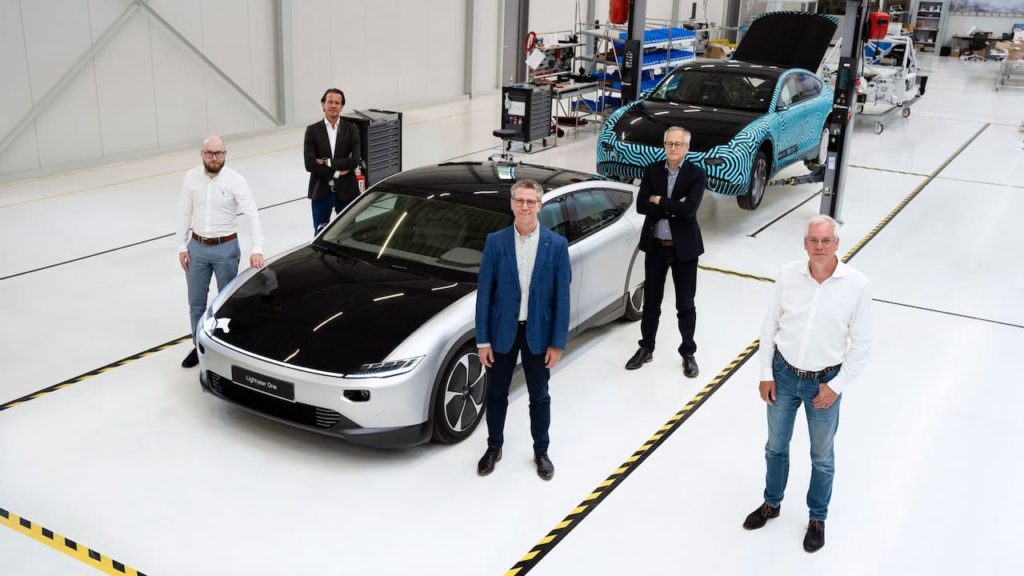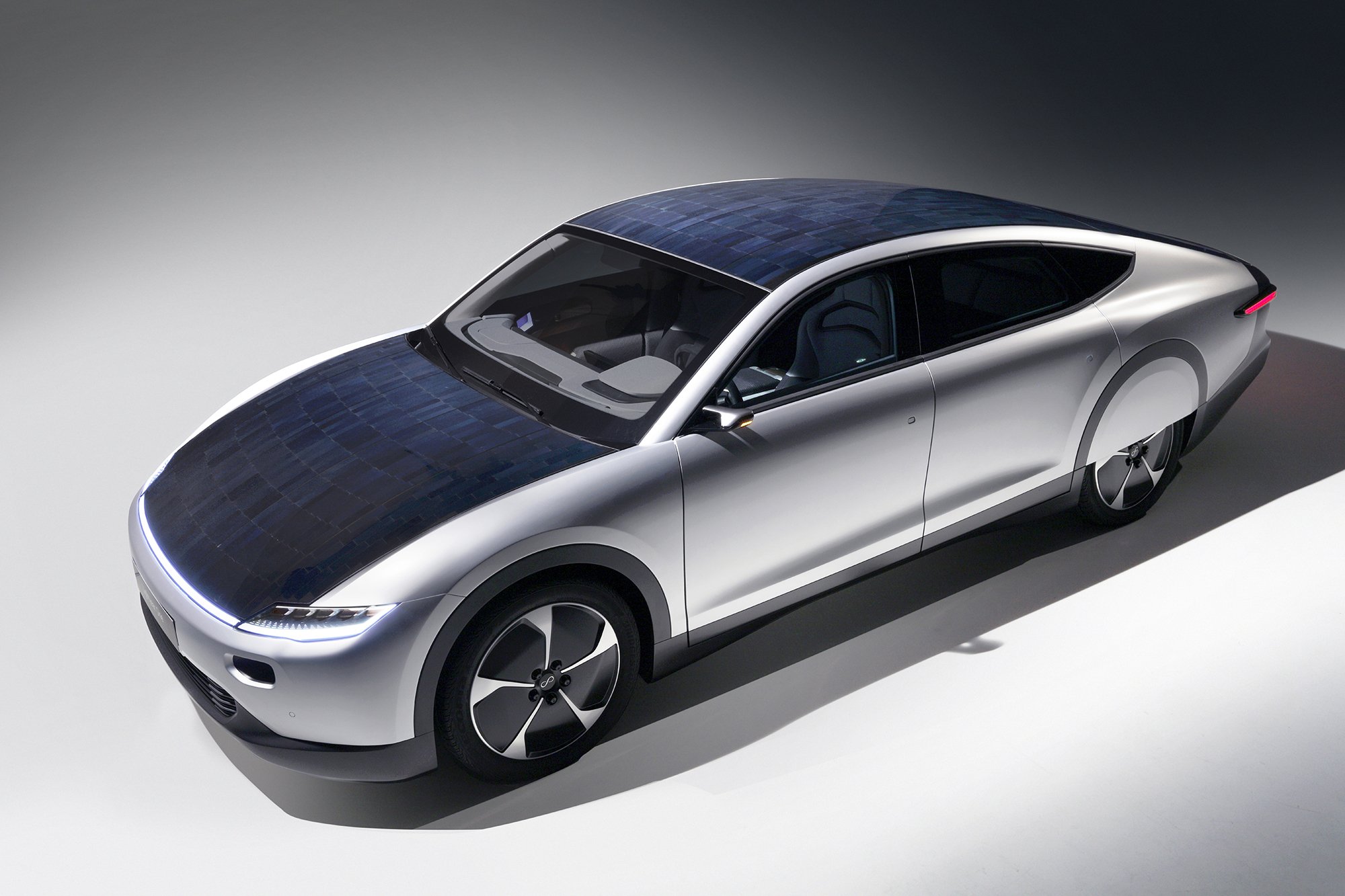Update: ‘Bridgestone develops Lightyear One tyres’ section added and ‘Solar car Specifications’ section updated.
A Dutch start-up has made huge strides towards sustainable mobility with its upcoming Lightyear One solar-powered EV — claimed to be the world’s most efficient car by the company. Here’s everything we know about the solar car.
Background
The Lightyear One is a project by the Dutch Solar Team Eindhoven that won the Bridgestone World Solar Challenge in 2013, 2015, and 2017. The challenge is no easy feat as teams are required to cover hundreds of miles using solar power only. Having won this challenge three times, customers can rest assured that Lightyear knows a thing or two about manifesting solar energy into zero-emission mobility. Still, the journey to mass-producing a car is not an easy one.
The most important metric for any EV is efficiency — the energy consumption per kilometre. If you can bring that down you can provide a lot of range with a small battery. With the solar panel that brings in the energy, you can drive very far.
Lex Hoefsloot, CEO, Lightyear.
Design
The Lightyear One packs a gorgeous design. Uncluttered surfacing and no overly done cuts and creases make it appear attractive. There are sleek horizontal LED headlamps upfront with integrated DRLs that merge with the full-width LED strip housed on the edge of the bonnet. Being an EV, there’s no conventional grille, but there’s a lower air intake for cooling the battery. The bonnet and roof area houses the solar panels, and right below the headlamps are the fog lamps.

Move to the side profile, and the design appears dramatic. There’s a long, Mclaren Speedtail-like downward swooping rear. The wheels are half covered, and the alloys have an aero design to reduce drag. There are no regular door mirrors either. Small panels protruding from the base of the A-pillar house a camera that sends a feed to screens on the inside. Just like the Honda e, for example. What’s more, the wraparound LED combination lamps at the rear are united by a full-width stop-light bar.
Coefficient of drag of 0.20
The Lightyear One is among the most aerodynamic cars on the planet. With 0.20 Cd, it matches the aerodynamic efficiency of the Mercedes EQS. In principle, an aerodynamic car reduces the burden on the powertrain thanks to its slippery shape cutting through the wind, reducing resistance.
If wind resistance is reduced as much as possible we can drive further with the same amount of energy. It’s important we test how the car performs with different wind speeds, we test the airflow over the car, how much drag it produces, how much lift it produces and what effect that has on the range eventually.
Annemiek Koers, Lightyear’s Aerodynamics Domain Expert.

Lightyear conducted extensive wind-tunnel tests with the car, trying different permutations and combinations. The bottom of the car is completely flat, and there’s a shallow slope going into the rear. If it’s a short car, there will be a steeper slope that will increase drag. A longer car gives the Lightyear One higher pressure recovery, and even the wheel covers help with this, making the air flow more guided around the vehicle.
Interior
The interior appears minimalistic and functional. The dashboard, the centre console, and the door trims comprise a honeycomb-patterned texture. There’s a central touchscreen, a digital driver’s display, and a flat-bottomed steering wheel. The seats appear to be upholstered in premium fabric, and they have integrated headrests.
Lightyear seems to have scored high on practicality as well. There’s a massive storage area (12 litres) under the centre console. The boot is capable of holding 780-litres of storage. With the rear seats folded, this can be extended to a whopping 1701 litres of space.

Solar Car specifications
The Lightyear One is 5057 mm long, 1898 mm wide, and 1426 mm tall, roughly the same length as a long-wheelbase Mercedes E-Class. It’s built using a lightweight body and chassis with balanced aluminium and carbon fibre usage.
In terms of powertrain, the vehicle has four independently controlled electric motors, one on each wheel with torque vectoring. It’s an electromagnetic in-wheel motor design that removes the transmission, reduces energy losses, and aids efficiency. According to Motor Trend, the motors produce 34 hp each, resulting in a combined 136 hp. Acceleration from 0-100 is under 10 seconds.
Roof-mounted solar panels
The Lightyear One solar car has 5 square meters of solar panels to provide up to 70 km of range per day. The double-curved solar configuration on the roof and the bonnet can produce 215 W/m2. The company says that there is no need to charge the vehicle daily as the car can do it independently. The solar cells are encased in safety glass, and the sturdy solar roof and hood live up to “rigorous auto industry regulation,” according to the company.
TNO helps curve the panels
In 2020, the company signed a Memorandum of Understanding (MOU) with TNO, an independent research organization, to continue customizing and improving its solar energy technology. TNO has already helped Lightyear develop aerodynamic solar panels that go on to the car’s body.
As the company claims, researchers at TNO have adapted DSM’s conductive back sheet foil, which is normally used for rectangular solar panels, to produce aerodynamically curved, more energy-efficient, and lightweight solar components. These are suitable for volume manufacturing, claims the company. These improvements to the technology would enable Lightyear to implement it faster in its electric car and integrate it easily into the production process.
| Lightyear One Aspect | Specification |
| Length | 5,057 mm |
| Width | 1,898 mm |
| Height | 1,426 mm |
| Battery | 60 kWh |
| Range | 725 km (WLTP) |
| Motor | 4 X 36 hp / 136 hp combined |
| Acceleration (0-100 kmph/62 mph) | Under 10 seconds |
| Energy use | 83 Wh/km (WLTP) |
| Charging (In 1 hour) | Solar: 12 km 3.7 kW at 230 V: 35 km 22 kW (public): 209 km 60 kW (fast charging): 570 km |
Battery & Motor
With just a 60 kWh battery, the Lightyear One can drive 725 km on the WLTP cycle, translating into an impressive efficiency of 83 Wh/km (WLTP) without the use of HVAC. In one hour under the sunlight, the solar cells can produce up to 12 km of range. That said, the Lightyear One can also be charged conventionally. A 230 V, 3.7 kW charger brings 35 km range in one hour, a 22 kW public charger provides 209 km range, while a 60 kW DC fast charger can provide 570 km range in just one hour.

Range
In a recent test conducted by the company, the One drove over 400 km (248.5 miles) at 130 kmph (80.8 mph) on a single charge of its 60 kWh battery at the Bridgestone Technology and Solutions Centre EMIA in Aprilia, Rome. This is less than One’s previous test conducted at the Aldenhoven test centre in Germany, where it achieved 710 km (440 miles) of range at 85 kmph (52.8 mph). The brand says that the testing will ensure that the car performs well in various environments.
Bridgestone develops Lightyear One tyres
Carmakers working in conjunction with tyre manufacturers to develop vehicle-specific designs is not a new process. In April 2021, Bridgestone developed state-of-the-art tyres for the Lightyear One solar car using its in-house eco-friendly tyre technology christened ‘Eliten.’ Bridgestone applied this technology to its existing Turanza Eco tyre series.
With the rubber’s silica dispersion enhanced thanks to a new mixing technology, Bridgestone achieved a 3.6 kg (10%) overall reduction in the tyre’s weight per vehicle. As a result, rolling resistance was greatly reduced without compromising grip and performance. Bridgestone also used fewer raw materials in the manufacturing process and engineered a new tread pattern.
Production

In July 2021, Lightyear said that its solar car would go into production in the summer of 2022 as an exclusive first series. After more than a year of selection processes, Lightyear partnered with Valmet Automotive to produce the solar car. Valmet Automotive has over 50 years of experience producing models for big car companies and has made over 1.7 million vehicles for brands like Saab, Mercedes-Benz, and Porsche under contract manufacturing. The Valmet Automotive plant in Uusikaupunki, Finland, where it also has its battery production line, will make the solar car.
Price & Release date
Initially, Lightyear will offer an Exclusive Edition in limited numbers. Lightyear will build only 946 cars at a purchase price of GBP 126,857 (EUR 150,000), excluding taxes. Deliveries will begin by Summer 2022, and the vehicle is available to order in countries such as Norway and Switzerland.
Lightyear One FAQs
What is the Lightyear One release date?
Lightyear has said that its solar car will enter production this summer at Valmet’s manufacturing facility in Finland, followed by customer deliveries.
What is the Lightyear One price?
Lightyear will build just 946 cars at a purchase price of EUR 150,000 (GBP 126,857) excluding taxes.
What is the Lightyear One range?
With a 60 kWh battery, it has an impressive range of 725 km (WLTP). The solar panels on the body offer a 12 km range for 1 hour in sunlight.
Featured image: Lightyear



